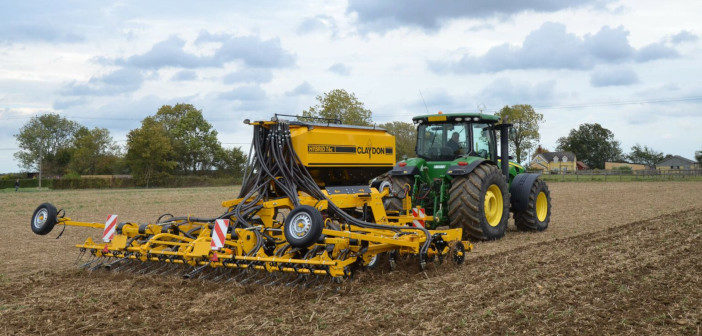Feeding crops is vital to keep late-drilled wheat going through the winter months, especially those on heavy ground.
All wheat crops require approximately 150 day °C to get from sowing to emergence, regardless of when they were drilled. For a November drilled crop this could be as much as 26 days, close to double that of a crop drilled in October at 15 days. And November drilling is likely for many with further wet weather forecast, adding to the battering many areas experienced after Storm Babet hit on Friday, October 20th.
As well as getting late-drilled wheats off to the best possible start, you’ve got to keep them going strongly as they come through the winter, advises Farmacy agronomist, Ben Haste. “Unlike traditional wheats after roots, they’re unlikely to have plenty of available nutrition in the soil and, in many cases, they must cope with the extra nutrient drain of incorporated straw.”
“Soils will be rapidly cooling and with this there is less biological cycling in the soil and thus a much slower availability of nutrients to the plant.”
He believes the best way to ensure a late-drilled crop reaches its full potential is to ensure nutritionally it has the upper hand to keep it out of a stress situation and in this way avoid increasing its susceptibility to disease.
“Feeding crops is vital to keep late-drilled wheat going through the winter months. It is important that N, P and K are all applied correctly, efficiently and sustainably and most importantly at the right balance that your soils require. The key is to be aware of the overall nutritional picture of each field,” he notes.
If phosphate has not gone on with the seed, then it needs to be applied early to encourage rooting – but its availability is reduced in cold wet soils so consider using a liquid phosphate fertiliser which is more readily taken up in these conditions.
“Also, just like second wheats, a good early dose of nitrogen will be important to maximise tiller retention. By which I mean 60-80 kg N/ha in mid-February if conditions permit, ideally accompanied by fresh phosphate, some potash to support shoot development and sulphur to balance the nitrogen.”
“Then you should come back with the nitrogen regularly to keep the crops going,
so you don’t leave a ‘hungry gap’. And once they’re growing away apply an early, low-temperature-active PGR. This will help tiller retention, promote rooting and counteract the tendency for thick crops with thinner shoots to be more prone to lodging.
Mr Haste also recommends a good dose of a seaweed bio-stimulant at this stage. ”This helps to boost young plant immunity and is fantastic for feeding the soil life, thereby keeping the biology cycling providing a better soil environment for the release of nutrients to the plant.”
“It’s all a matter of recognising the challenges of later drilling and doing everything possible to counteract them,” he concludes.




